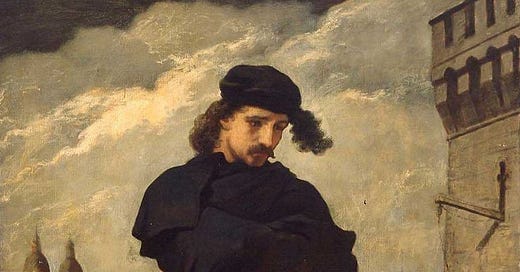A very sad prince (Hamlet #17)
An accessible read-through of Shakespeare’s Hamlet (Blog 17) (Act 1, Scene 2)
Hamlet and his mother have been verbally jousting. In response to the Queen’s, ‘Why does it seem as if your father’s death is effecting you so much?’, Hamlet replies:
Hamlet:
‘Seems’, madam? Nay, it is. I know not ‘seems’.
Emphasis on the ‘is’.
Hamlet questions his mother’s use of the term ‘seems’ – it doesn’t seem as if his father’s death is effecting him greatly, it is effecting him greatly.
A key point here. Hamlet draws attention to the relationship between appearances and reality, a very important theme in the play. Seeming to be something and actually being something. In the following verses, Hamlet expresses how he actually feels the loss of his father, thereby subtly scolding his mother and King Claudius for not really mourning the loss. They are merely putting on a show of mourning.
Hamlet (the play and the character) pays such close attention to words. Words are a veil pulled over reality, tools that can be used to mislead and manipulate. Words are not the thing itself, they are a description of the thing, and the speaker (King Claudius for instance) can alter this description to suit his own ends. The play is desperately concerned with the dark realities that lie behind the veil of words.
‘Tis not alone my inky cloak, good mother,
Nor customary suits of solemn black,
‘Customary’ refers to social norms (the wearing of mourning clothes for a long period). Hamlet is saying that his mourning clothes do nothing to describe how he truly feels.
Nor windy suspiration of forced breath,
No, nor the fruitful river in the eye,
Nor the dejected ‘haviour of the visage,
Together with all forms, moods, shapes of grief,
That can denote me truly.
Hamlet summarises all the classic visible manifestations of grief. ‘Suspirations of forced breath’ means sighs and sobs, ‘the fruitful river in the eye’ refers to copious tears, and ‘dejected ‘haviour of the visage’ denotes a despondent and downcast expression.
However, as highlighted in the lines that follow, these are merely outward displays of grief. His sorrow runs far deeper than this.
There is also a strong lexical field of theatre vocabulary in this passage, hinting at the distinction addressed above between appearances and reality, acting and truth. ‘Moods’ signifies ‘appearances’, and ‘shapes’ can refer to a role played by an actor. Below, the term ‘play’ again refers to acting in a play.
These indeed ‘seem’;
For they are actions that a man might play.
But I have that within which passes show –
‘Passes’ means ‘surpasses’, i.e. the true pain that dwells within him surpasses this outward ‘show’ of depression.
An interesting set of meta verses crafted by the playwright here. Shakespeare draws attention to the reality of a play and actors in a play, all the while emphasising the very real grief of this particular character. Shakespeare both emphasises and breaks the theatrical illusion. Everyone else is an actor, Hamlet is actually real.
These but the trappings and the suits of woe.
‘These’ refers to the list of grievances and Hamlet’s black mourning clothes, his ‘inky cloak’.
To summarise, all of Hamlet’s outward emotional displays and clothes appear as grief, but anyone could act as if they were grieving, even a character in a play (Hamlet is a lover of theatre). Inside him, invisible, there is something far more sorrowful.
Hamlet is melancholic due to both his father’s death and the court’s reaction to this death (particularly his mother’s reaction). This has thrown him into a deep depression.




